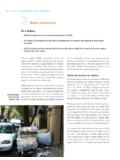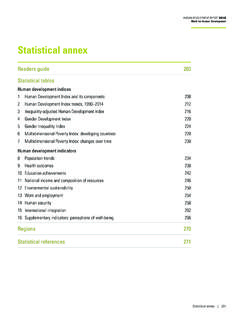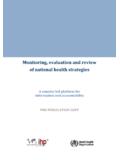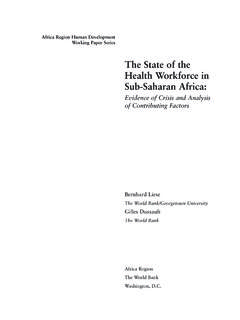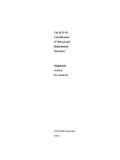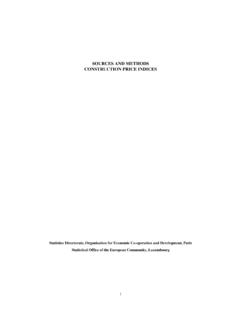Transcription of Keeping an Eye on SDG 15 - Food and Agriculture ...
1 Keeping . AN EYE. ON SDG 15. Working with countries to measure indicators for forests and mountains . FORESTS AND MOUNTAINS. IN THE SUSTAINABLE. DEVELOPMENT GOALS. The 2030 Agenda for Sustainable provide. In particular, SDG 15, Life Development and its 17 Sustainable on land , puts forests and mountains Development Goals (SDGs) set out the at the centre of the sustainability of international community's commitment terrestrial ecosystems. to rid the world of poverty and hunger The Inter-agency Expert Group on SDG. and achieve sustainable development in Indicators (IAEG-SDGs) agreed on a its three dimensions economic, social framework of targets and indicators to and environmental.
2 Measure progress towards the SDGs. Forests and mountains are referred to Two of the targets in SDG 15 several times in the SDGs because of and explicitly refer to forests their significant contributions to food and sustainable forest management, security and livelihoods and the many and a third target, , refers to the products and ecosystem services they conservation of mountain ecosystems. 1. Forest inventory, Democratic Republic of the Congo FAO/Giulio Napolitano FAO'S ROLE UNDER SDG 15. FAO is the custodian agency for three of FAO's main tasks as a custodian agency the indicators for SDG targets , are the development of methodologies and to measure progress; the collection, compilation and validation of data; the These indicators and their methodologies submission of data and storylines to the have been agreed by the IAEG-SDGs, and United Nations Statistical Division; and the they form part of the SDG Global Indicator provision of support to enable countries to Framework approved in March 2017.
3 Develop their reporting capacity. Indicators for which FAO. SDG 15 Targets*. is the custodian agency : By 2020, ensure the conservation, restoration : Forest area as a and sustainable use of terrestrial and inland proportion of total land area freshwater ecosystems and their services, in particular forests, wetlands, mountains and drylands, in line with obligations under international agreements Protect, restore and : By 2020, promote the implementation : Progress promote sustainable of sustainable management of all types towards sustainable use of terrestrial of forests, halt deforestation, restore forest management ecosystems, degraded forests and substantially increase sustainably manage afforestation and reforestation globally forests, combat desertification, and : By 2030, ensure the conservation of mountain.
4 Mountain halt and reverse land ecosystems, including their biodiversity, in order Green Cover Index degradation and halt to enhance their capacity to provide benefits biodiversity loss that are essential for sustainable development * The full set of targets under SDG 15 is available at Orangutan, Malaysia Sara Maulo 2 . FAO: WORKING WITH. COUNTRIES AND PARTNERS. FAO is working with countries and other FRA will collect updated information international organizations to ensure high- on these indicators annually. quality data and improve monitoring and 2. The Mountain Partnership Secretariat reporting capacity on the three indicators.
5 (MPS) produces data for indicator As a leading source of forest-related using remote sensing, and information since 1946, FAO has a long national-level data are distributed to tradition of monitoring the world's forests. governments for validation. FAO collects and analyses data on forest resources periodically through several The final submission to the United well-established processes, including the Nations Statistical Division of data on Global Forest Resources Assessment (FRA). the three indicators is the responsibility Many countries conduct assessments of of FAO's Chief Statistician, who their forest areas and other forest variables, supervises the reporting of all SDG.
6 Increasingly using remote sensing to indicators under FAO custodianship. complement ground-level forest inventories. FAO further supports the SDG reporting The data generated by such assessments process through partnerships and are reported periodically to the FRA. networking with other agencies with FAO collects and reports data on SDG 15 responsibilities for forest-related issues. indicators through the following two processes: Under the umbrella of the Collaborative Partnership on Forests, agencies are 1. Countries provide FAO with data for working on a global core set of forest-related indicators and as part of indicators, which is expected to support the FRA process.
7 The data are subject monitoring of progress in the implementation to a comprehensive FAO review of both the 2030 Agenda for Sustainable and then validated by countries. It is Development and the United Nations expected that, starting in 2018, the Strategic Plan for Forests 2017 2030. Forest in the Tatarstan Republic, Russian 3. Federation FAO/Vasily Maksimov THE INDICATORS. FOREST AREA AS A PROPORTION OF. TOTAL LAND AREA. Accurate information on a country's forest Data on this indicator are available for all area is crucial for forest policy and planning. countries and territories and can be aggregated Changes in forest area reflect changes in to produce regional and global estimates.
8 Demand for land for other uses and may help in Officially nominated FRA National identifying unsustainable practices in the forest Correspondents report official national data and Agriculture sectors. on forest area to FAO. Country reports are Indicator , which measures the prepared using a standardized FRA reporting proportion of the total land area that is format and commonly agreed definitions. forested, can be used as a proxy for the Each national dataset has its own extent to which forests are being conserved or characteristics, and the reporting format restored. It is a well-established indicator, for enables countries to indicate the original data example, proportion of land covered by forest.
9 Sources as well as national classifications, was used to help monitor progress towards the definitions and terminologies. Country Millennium Development Goals. reports also describe how forest area has ABOUT THE DATA been estimated according to the globally agreed FRA standard categories and Indicator is calculated as the forest area in the latest reporting year divided by the total reporting years. land area in 2015, expressed as a percentage. 4 . Forest inventory, Viet Nam FAO/Joan Manuel Baliellas 5. PROGRESS TOWARDS. SUSTAINABLE FOREST. MANAGEMENT. The United Nations General Assembly has defined Sustainable Forest Management (SFM).
10 As a dynamic and evolving concept that aims to maintain and enhance the economic, social and environmental values of all types of forests, for the benefit of present and future generations (Resolution A/RES/62/98). FAO worked with partners1 to develop the methodology for reporting on this indicator. The following five subindicators measure progress on the three dimensions of SFM ( economic, social and environmental), taking intergenerational equity into account: 1. The forest area net change rate monitors the rate at which forest area changes over time. 1 The International Tropical Timber Organization and the secretariats of the United Nations Convention to Combat Desertification, the United Nations Framework Convention on Climate Change, the United Nations Forest inventory, Australia Forum on Forests, and the Montreal Process.










